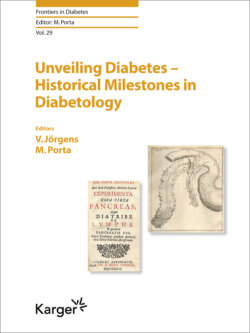Читать книгу Unveiling Diabetes - Historical Milestones in Diabetology - Группа авторов - Страница 28
На сайте Литреса книга снята с продажи.
La Piqûre Diabétique
ОглавлениеAnother observation he became famous for during his lifetime was his “piqûre diabétique” (Fig. 4). On April 3, 1849, Claude Bernard punctured the fourth ventricle of a dog (and later in numerous other animals). Twenty minutes later glucosuria occurred, and 2 h later it was even more pronounced. He published this discovery, discussing the possibility of a central nervous origin of diabetes [4, 5]. The title of his exuberant first report to the biological society [4] was: “Chiens Rendus Diabétiques.” The use of the plural, however, was wrong. The experiment was positive in only 1 of the dogs, at least 3 others did not become diabetic. For decades, these experiments were an argument for a neuronal pathogenesis of diabetes even if his experiments were difficult to repeat. Some of the effects of Bernard’s “piqûre diabétique” may simply be explained by the terrible stress the tortured animals had been forced to endure.
Fig. 4. Drawing by Claude Bernard explaining the “piqûre diabétique” in a rabbit, from the archives of the Collège de France [9].
